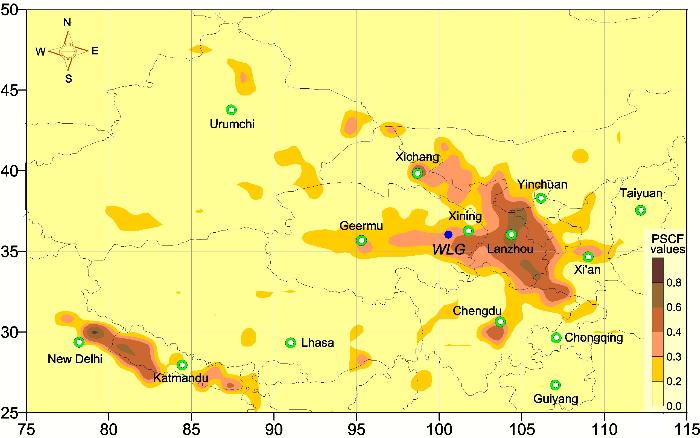From September 2007 to September 2008, Professor FENG Xinbin’s group from Institute of Geochemistry, Chinese Academy of Sciences (IGCAS) has conducted continuous measurements of speciated atmospheric mercury (Hg) concentrations at the Waliguan Baseline Station, which is one of the 24 World Meteorological Organization’s (WMO) Global Atmospheric Watch Baseline Stations situated in the edge of northeastern part of Tibetan Plateau, Western China. Their discoveries were published in the latest issue of Atmospheric Chemistry and Physics(Atmos. Chem. Phys., 12, 1951–1964, 2012).
They have found that Atmospheric Hg species including gaseous elemental mercury (Hg0), gaseous oxidized mercury (GOM) and particulate bounded mercury (PBM) were 1.98 ± 0.98 ng m-3, 7.4 ± 4.8 pg m-3 and 19.4 ± 18.1 pg m-3, respectively, which were comparable to the global background values in the Northern Hemisphere. The temporal trends of speciated atmospheric Hg concentrations indicated that long-range transport processes were an important source of Hg0 and PBM in ambient air of the Tibetan Plateau, whereas variations of GOM concentrations showed major links to regional emissions sources as well as in situ photochemical productions. In addition, their preliminary modeling study showed that eastern Qinghai, eastern Gansu, western Ningxia and western Shanxi Province were likely the potential source regions of WLG, with good accordance with locations of urban areas and industrial centers.
Moreover, it is worth mentioning that they discovered that Northern India might be a significant source region for WLG during the sampling campaign, which was the first published evidence suggesting long-range transport of atmospheric Hg from India to the Northeastern Tibetan Plateau.

Figure Potential source areas of Hg0 at Waliguan (WLG) baseline station (Image by IGCAS)
(By FU Xuewu)